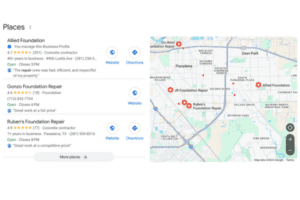Think back to the last time you had to contact a company to fix a problem for you or answer a question you had.
How did it go?
Was the Customer Service Agent helpful? Friendly? Human? Understanding?
Or none of the above?
I’ll give you an example from my experience.
My husband and I love to order food delivery services on nights when we don’t feel like cooking. Generally, we are willing to pay the extra fee and write out the directions to our apartment for the satisfaction of having tasty food delivered to our door.
This past week, the food did not make it to our door. Even though the delivery person stated that the order was complete.
Uh oh. We had a problem.
Immediately, we reached out to the delivery service for help. We explained that the order was complete, but our food was nowhere to be found.
Their response?
“Wait an additional three minutes and then we will speak to you regarding this order.”
My husband and I ended up having to search the apartment complex for our food. It was frustrating to have reached out to a company, only to be told to wait. Our word in and of itself wasn’t enough.
If I had to choose how to label this experience, I’d say frustrating, or more appropriate for today’s post “the bad”.
We’ll come back to this example in a bit.
Let’s get started talking about something a little more positive.
The Good
Companies that do Customer Service well can be tricky to describe, generally because each company has a brand culture that is serving their specific audience.
But generally speaking, we can identify them by the following:
They speak the language of their target audience fluently.
I don’t mean just the words they use, but also the actions they take to delight their customers makes sense to their audience.
They know who their customers are and what they want and they give that to them.
For example, a startup tech company whose demographic prefers to be reached via Live Chat and Twitter will focus more efforts on being present on those platforms and building a consistent way for their customers to connect with them there.
On the other hand, a company whose target audience prefers to be contacted via e-mail or Facebook is going to spend its Customer Service’s time and efforts pouring into those channels.
In order to speak your customer’s language, you have to know what language they speak, so to say.
Sending a survey to your Customers and Leads that asks them what kinds of things they expect when they reach out to your company can give you an idea of what you can start focusing on. Consider using free services like SurveryMonkey or Quiz Maker.
The Bad
Let’s backtrack to the food delivery service I mentioned at the beginning of the post.
This service had a lot of potential. One of the reasons I use this service consistently is because they have an easy to use texting feature that allows you to communicate with them at any time during the order, which for me, is a selling point and something I look for in companies.
In previous times, this feature has helped me solve any problems with an order without having to reach out to another level of Customer Service.
But this time was different. My food had been delivered; it had been delivered to the wrong place. A photo sent by the delivery man confirmed this.
Waiting three minutes could mean losing my dinner and having to wait another 30 minutes for a replacement. Time was definitely of the essence and they missed this part of our concern.
Bad customer service usually means at least one part of the conversation was lost in translation.
Taking steps to repeat your customers’ concerns back to them at various points in the conversation and empathizing with their concern can go a long way.
“This is a frustrating situation and I’m sorry for the inconvenience. I just want to ensure I’m understanding you correctly so I can get this resolved for you quickly. Your concern is _______ and you would like ___________.”
If they confirm what you say, proceed by ensuring them that you’ll do all you can to get their concern resolved.
Had the delivery service quickly confirmed my concerns and given me advice for tracking down my food, it would have calmed my nerves about losing my food to someone else. Or at least ensured me that they cared.
Bad Customer Service makes too many assumptions about what the customer wants.
These assumptions generally lead companies to make mistakes in answering their customers’ questions and solving their problems.
Don’t assume, ask them what they want.
The Ugly
And last, but not least, we’ve arrived at the ugliest parts of Customer Service.
Whether it be an angry customer that calls screaming and ready for battle or an overworked Customer Service department that has very little means to actually solve their customers problems, a particularly unhappy customer’s experience can affect your team’s morale and your company’s reputation.
Ugly Customer Service means the two parties are speaking completely different languages and do not understand each other at all.
It goes beyond a minor mishap in communication. It means that the relationship has been damaged beyond repair. A customer discontinuing their service or writing a terrible review online to document their experience.
Think of a company you either have had a bad experience with or that has a bad reputation.
How would you describe them?
How would your friends or family describe a company they no longer support?
Rude, unprofessional, not helpful, and/or unorganized?
Customer Service departments need support from upper management. They need to know how to solve problems independently and how to satisfy customer needs without having to always say.
“I’m going to have to place you on hold while I figure that out.”
They also need to know a little bit about de-escalation. Customer Service cannot be held accountable for how every angry customer reacts when they hear news they do not like, but they can know how to respond when people start to yell or make ugly comments.
Here are some suggestions from the Crisis Prevention Institute:
- Be Empathic and Nonjudgmental
- Use Nonthreatening Nonverbals
- Avoid Overreacting
- Set Limits
- Choose Wisely What You Insist Upon
- Allow Silence for Reflection
- Allow Time for Decisions
When It’s All Said and Done
You can’t control how your customer will respond to any given scenario.
But you can control how you and your team respond to every situation by setting clear expectations and training for all of your Customer Service Agents.
Today, we’ve covered the Good, the Bad, and the Ugly of Customer Service so I’ll leave you with this:
Focus on getting to know who your customers are so that you can speak to them in a way they understand. Healthy communication will result in healthy relationships with your customers so that they keep coming back for more.















